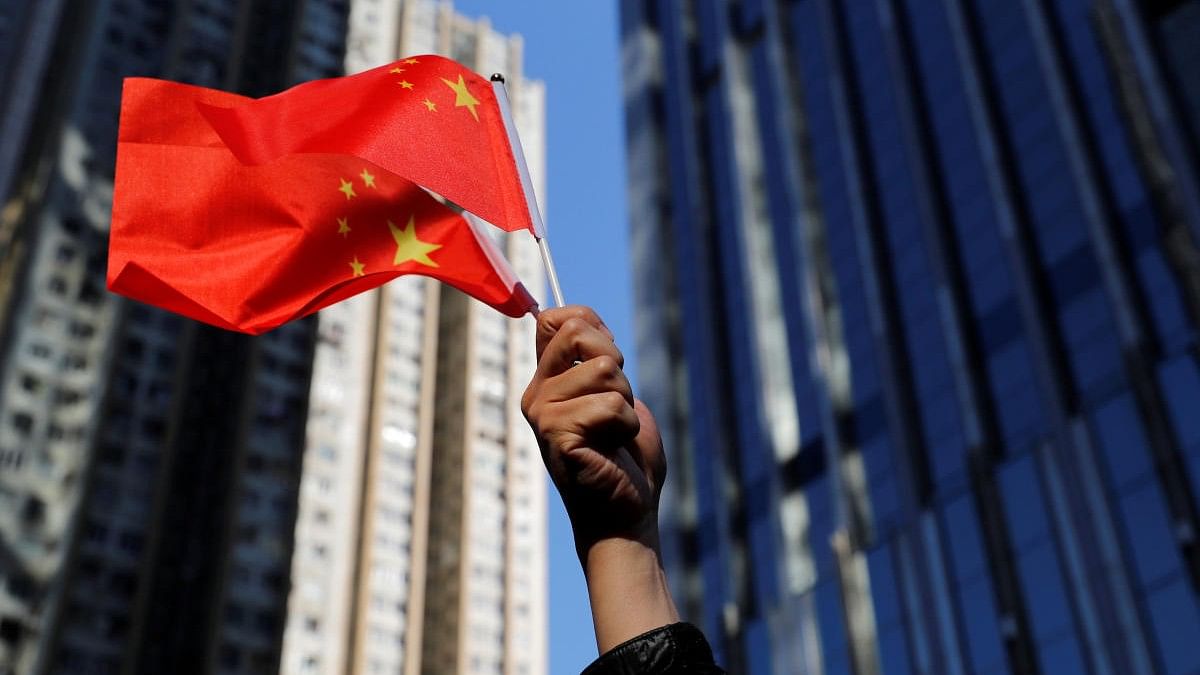
The Chinese National Flag. (Image for representation only)
Credit: Reuters File Photo
China’s strategy hinged on a flawed belief that massive upfront investments in infrastructure would stimulate economic activity in the host countries, leading to increased demand, and prosperity
In the Chinese epic ‘Romance of the Three Kingdoms’, the tale of Zhuge Liang stands as a poignant reminder of the perils of hubris. Zhuge, a brilliant strategist, orchestrated massive multi-front wars on the Wei with grand ambitions of reunifying China. Yet, in his overreach he achieved only hollow victories, and stretched resources resulted in defeat.
China’s One Belt One Road (OBOR) initiative, is a modern-day saga of imperial ambition, and mirrors the tale — a colossal effort beset by overconfidence and faltering outcomes.
Carrying Xi Jinping’s signature with a $1 trillion price tag, the OBOR vision was audacious: to resurrect ancient trade routes linking China to Europe, Africa, and beyond.
It promised to export Chinese capital, technology, and projects ensuring that Beijing sat at the heart of a new world order. In practice, however, the OBOR is a failed project. It leaves in its wake burdened host countries with unsustainable debt, and white elephant projects; and, in the face of China’s economic slowdown, it looks increasingly like a strategic miscalculation.
The flawed economics of upfront spending
At the heart of the OBOR’s failures lies a fundamental flaw in its economic model. China’s strategy hinged on a belief that massive upfront investments in infrastructure would stimulate economic activity in the host countries, leading to increased demand, and prosperity. This approach, which worked like magic domestically during China’s rapid urbanisation, has proven disastrous when exported.
The infrastructure projects, often built with Chinese loans and labour, have not catalysed the anticipated economic growth. Instead, they have become financial albatrosses for the host nations. The underlying assumption that demand would naturally follow investment has proven overtly simplistic, ignoring the complex realities of different regions.
Sri Lanka’s Hambantota International Port is a case study of the OBOR absurdity. The Chinese offered a $1.4 billion loan at 5 per cent interest for its construction, but the port has struggled to attract any ships.
Colombo’s inability to repay the Chinese loans for the port led to a controversial debt-for-equity swap in 2017, with Beijing taking a 99-year lease on the facility. The move sparked fears of neocolonialism, and underscored the risks for countries that borrow heavily under the OBOR. For China too, Hambantota represents a mistake. You can’t use a commercial port as a navy base, and that $1.4 billion investment is unlikely to be recovered in the near future and in a straight manner.
A train to nowhere
The Standard Gauge Railway (SGR) linking Kenya’s capital Nairobi to the port city of Mombasa is another emblem of the OBOR’s troubled legacy. The $3.6 billion railway, funded largely by Chinese loans, was touted as a game-changer. The SGR has struggled to attract freight business, operating well below capacity. Now, China has had to offer debt restructuring with no interest.
The problem is simple: there isn’t enough demand to justify the railway’s existence. The project was based on overly optimistic projections of economic growth and trade volumes. Instead of boosting Kenya’s economy, the SGR has become a financial millstone. Kenya’s government is now saddled with debt, and the railway’s operational costs are far higher than its revenues.
A corridor of unaffordable ambitions
Perhaps nowhere is the OBOR’s flawed model more evident than in Pakistan, where the China-Pakistan Economic Corridor (CPEC) was hailed as a transformative initiative. The $62 billion CPEC project aimed to link the port of Gwadar to Xinjiang. It included highways, railways, power plants, and industrial zones.
Pakistan is now grappling with the consequences. The infrastructure built under the CPEC has not led to the expected economic dividends. Instead, Pakistan is facing a mounting debt crisis, with repayments on Chinese loans straining its economy and delaying a much-needed IMF bailout. This is compounded by political instability and a raging war for Balochistan’s freedom that just last week saw an attack killing more than 70 people.
Debt trap diplomacy
The OBOR failures point to a broader issue: the debt burden imposed on host countries. Chinese loans, often extended with minimal transparency and on terms that favour Beijing, have left many OBOR partners mired in debt. The latest is Hungary which took out a $1 billion cheque and now can’t repay.
For far too many countries the OBOR reality has been sobering. Instead of fostering economic independence, the initiative has deepened their financial dependence on China, and constrained their fiscal space.
A ridiculous vision in the face of China’s slowdown
As China’s economy slows, the contradictions at the heart of the OBOR become glaring. Beijing is now facing a difficult choice of admitting failure by scaling back the project.
In another Chinese epic ‘Journey to the West’ the Monkey King Sun Wukong’s pride leads him to rebel against the heavens, only to be humbled and imprisoned under a mountain by the Buddha. It’s this mountain of financial overreach that might imprison the OBOR.
The OBOR was born out of a mix of ambition and overconfidence.
As stalled projects and mounting debts meet purchasing power limits, the OBOR — which Beijing hoped would lead to a new world order — is turning into a spectacular domino of failed projects.
(Ninad D Sheth is a senior journalist.)
Disclaimer: The views expressed above are the author's own. They do not necessarily reflect the views of DH.